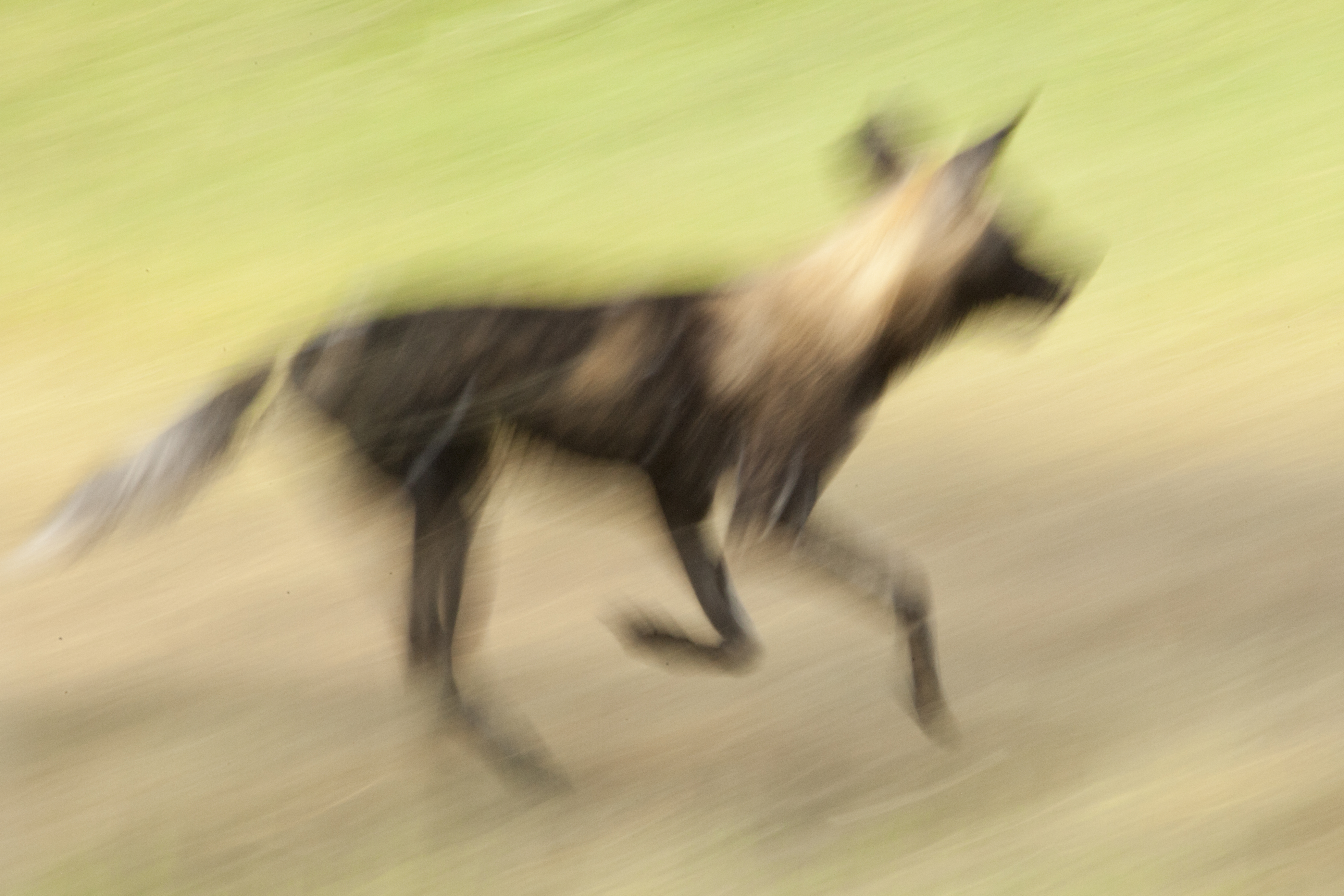Painted wolf is the meaning behind the African wild dog’s scientific name. But even with such a regal sounding name, these wild dogs don’t get as much respect as they should. Once found throughout sub-Saharan Africa in the hundreds of thousands, the wild dog’s range and population have vastly diminished.
Between 3,000 and 5,500 individuals remain, primarily in eastern and southern Africa. Sadly, farmers often dislike wild dogs, mistakenly blaming them for eating livestock. WWF is working to change the wild dogs’ reputation among local communities.
But we think they’re one of Africa’s most fascinating animals; here are some reasons why:
Fact #1: Unlike domestic dogs, wild dogs have long legs, four toes on their front feet and large, rounded ears. Though both species descended from wolves, they are unable to interbreed, and wild dogs can’t be domesticated.

The wild dogs’ large, round ears help them hear vocalizations from other dogs from a distance. © Court Whelan/NHA
Fact #2: Wild dogs are classified as endangered by the International Union for the Conservation of Nature (IUCN). They are killed by farmers, die from diseases passed on from domestic dogs and get caught in illegal snares set by poachers meant to catch other game. Habitat loss and larger predators also contribute to depleted numbers.
Fact #3: The wild dog is called several other names, including “painted hunting dog” and “cape hunting dog.”
Fact #4: Wild dogs live in tightly knit social groups of between two and 27 individuals. They are strongly bonded. They’ll even look after injured dogs, bringing them food until they recover.
Fact #5: The average wild dog litter consists of 10 pups, the highest number of any canid. Typically, only the dominant male and female breed, and other adults help rear the pups.
Fact #6: Even though they are much smaller than lion and leopards, wild dogs have a higher success rate when it comes to killing prey. Hunting at dawn and dusk, they work as a team and can bring down much larger animals, including antelope and wildebeest.
Fact #7: The wild dog’s short hair is in yellow, gray, white and black patches. No two dogs have the same markings and colorations, making it easy for conservationists to identify individuals.

The wild dogs’ coloration acts much like a fingerprint, no two have the same markings, making it easier for scientists to identify individuals. © Court Whelan/NHA
Fact #8: A wild dog’s vocalizations go well beyond that of a domestic dog. They greet each other with twittering and whining sounds, and when one dog has lost the group, it will make an owl-like “hoo” call to find the pack.
Fact #9: Wild dogs can run more than 44 miles per hour and roam across large areas of more than 770 square miles. They stick closer to their dens when caring for a litter of pups.
Fact #10: WWF is working to protect the wild dog by preserving wildlife corridors between reserves and reducing conflicts with locals.
Look for African wild dogs on an African safari with WWF and Nat Hab.
By Marsea Nelson, WWF Guest Blogger




























These painted dogs/ lycaon pictus are endangered
omg they ran run 44 miles per hour
This is going to make my project Mach better
awsome
omg super cute ahahahah
Cool cool
Cool
They are so cute who would want to kill them?
They are so cute
I support the wwf in saving this amazing wild dogs! his dogs are my favorite animals, may they live on forever! 🙂
they so cute im going to die
help to cute
cute and good dogs
Ha ha
what more could you produce
only aanimals with four litle tiny toes like a moe
Why can’t they breed with domesticated dogs?
They are a different species of dog and most offspring that are from 2 species of animals are infertile meaning they cant produce fertile offspring. It is possible for them to breed but its not possible for their offspring to produce offspring. I hope this makes sense…
Enjoyed most of the videos of all the different types of animals. Did not enjoy watching stupid people catching sharks for fun. They could find other ways of spending their time. I hated to watch the video. I worried that the shark could have been harmed.
If people were all vegan this killing of livestock would not be an issue.These dogs could live.Ranches are always causing violence in our society
What an amazing journey! Wow!
I just returned from the Nat. Hab Secluded Botswana trip. With Richard as our guide for the day we spotted a pack of the beautiful wild dogs running at full speed and were able to track them to their resting place and the den that had been chosen for the pups. we spent time observing them and eventually heard the pups from the den that was being watched over by one of the females from the pack. the alfa female and mother to the pups had been on the hunt. we were able to witness the unique behavior of the female left behind to watch over the pups greet the others with an unforgettable whaling cry and licking behavior whereupon the chosen ones regurgitated food from the kill to feed her. it was truly astounding to witness the interaction of these beautiful animals . I am forever taken with the “painted wolf” of Africa and will support the wwf in saving these facinating and beautiful animals. Thank you Richard for your devotion, knowledge, and love of the beautiful wild dog of Africa.